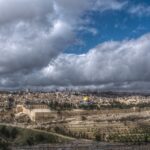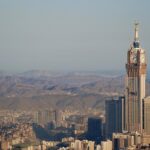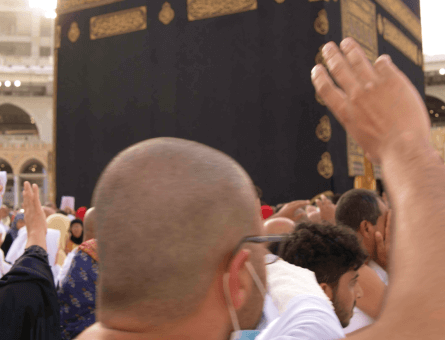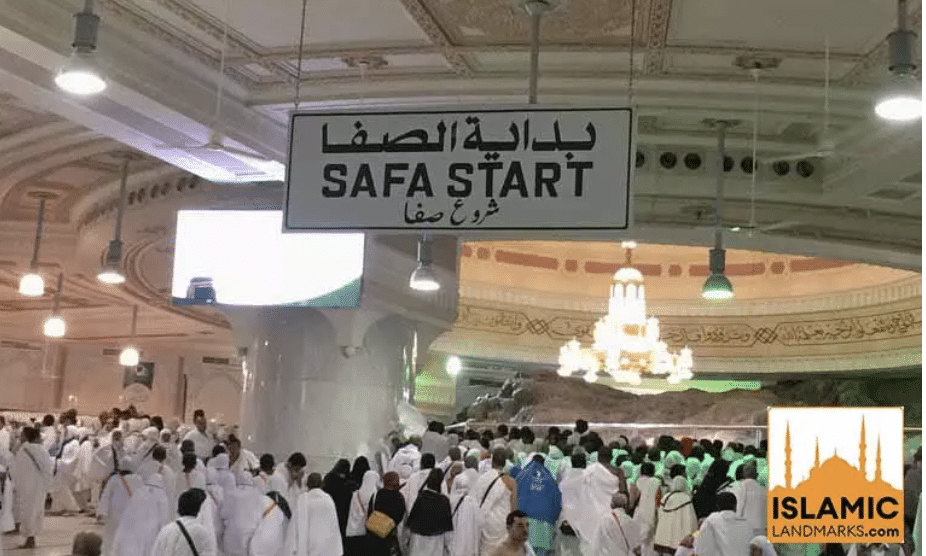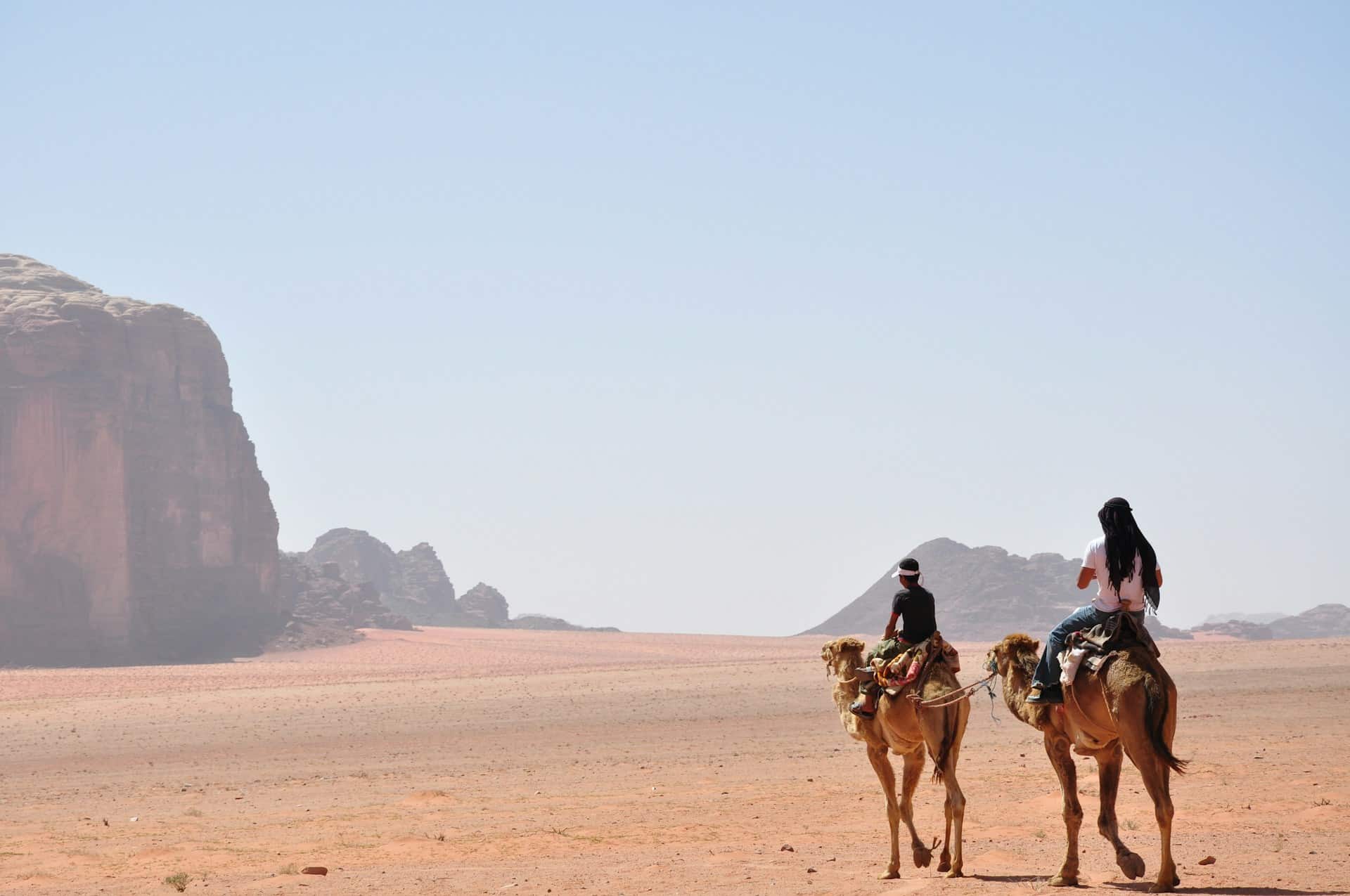Jabal Al Lawz – History, Significance and Facts
In the rugged landscapes of Saudi Arabia’s Tabuk Province lies a majestic and enigmatic wonder–Jabal Al Lawz, the “Mountain of Almonds.”
While it may be unfamiliar to many, this extraordinary natural formation is not merely a mountain; it’s a place steeped in history, legend, and mystery.
This article aims to unravel the captivating story of Jabal Al Lawz, shedding light on its significance, the ancient tales woven around it, and the astonishing beauty that has drawn explorers and travelers for centuries.
Join us on a virtual journey to the heart of Tabuk Province as we embark on an exploration of Jabal Al Lawz and other mountains of Saudi Arabia.
What Is Jabal Al Lawz?
Jabal Al Lawz is a prominent and historically significant mountain. This mountain, with its distinctive twin peaks, stands as one of the highest points in the Tabuk region, reaching an elevation of approximately 8,460 feet (2,580 meters) above sea level.
Jabal Al Lawz holds a special place in history and mythology. It is often associated with the biblical account of Mount Sinai, where Moses received the Ten Commandments.
Beyond its potential biblical significance, Jabal Al Lawz is a remarkable geological formation featuring rugged terrain, unique rock formations, and breathtaking vistas.
Intriguing and enigmatic, Jabal Al Lawz is a place where history, culture, and natural beauty converge, inviting travelers and researchers to uncover its secrets and appreciate its unique allure.
The mountain’s remote location and the tales woven around it make it a captivating subject of exploration and study.
What Does “Jabal Al Lawz” Mean?

The name “Jabal Al Lawz” is of Arabic origin, and it translates to “Mountain of Almonds” in English. “Jabal” means “mountain” in Arabic, and “Al Lawz” refers to “almonds.”
This name is derived from the presence of almond trees in the area surrounding the mountain, particularly during the spring when these trees bloom with beautiful white flowers.
The name reflects the natural characteristics of the region, where almond trees are known to grow, adding to the unique beauty and ambiance of the landscape.
Can You Visit Jabal Al Lawz?
Jabal Al Lawz is open to visitors. You can plan a trip with a tour guide to Jabal Al Lawz and immerse yourself in its rugged terrain, distinctive rock formations, and breathtaking views.
The region enjoys mild weather during the summer, autumn, and spring seasons, with temperatures remaining comfortable.
However, to witness the enchanting snowy landscapes, the ideal time to visit the mountain is during the winter months of December and January.
Before embarking on your journey, be sure to check the latest travel guidelines, permit requirements, and any regulations that may apply.
History of Jabal Al Lawz
The history of Jabal Al Lawz is shrouded in a captivating blend of legend, biblical narratives, and archaeological findings. While its historical significance is still a subject of debate, the mountain’s story is undeniably rich and multifaceted.
One of the most prominent aspects of Jabal Al Lawz’s history is its association with the biblical narrative of Mount Sinai, where Moses is said to have received the Ten Commandments.
Some scholars and researchers have proposed Jabal Al Lawz as a potential candidate for the biblical Mount Sinai, given its geographical proximity to the ancient land of Midian.
The debate revolves around the similarities between the descriptions of Mount Sinai in the Bible and the geological features of Jabal Al Lawz.
These similarities include references to a split rock, a large altar, and the presence of almond trees in the region.
However, it’s essential to note that this theory remains a topic of ongoing discussion and research.
The historical significance of Jabal Al Lawz is not limited to its biblical associations. The region has historical ties to the ancient land of Midian and the Nabatean civilization, which controlled significant trade routes in the Arabian Peninsula.
It’s believed that these routes passed through the vicinity of Jabal Al Lawz, further underscoring the mountain’s historical importance.
Facts about Jabal Al Lawz
Here are some interesting facts about the Mountain of Almonds in Tabuk Province, Saudi Arabia:
Jabal Al Lawz – A Geological Marvel
Jabal Al Lawz is a geological wonder characterized by its unique twin peaks, which have been shaped over millions of years by complex geological processes.
Composed primarily of granite and other igneous rocks, the mountain exhibits distinctive layers and stratification, reflecting the Earth’s geological history.
Exposed ancient rock layers provide valuable insights into the region’s geological evolution. The presence of igneous intrusions and geological folds and faults adds to the mountain’s geological complexity.
Weathering and erosion have sculpted the rock formations, contributing to the mountain’s rugged beauty. The geological features also hold the potential for mineral deposits, making it an area of interest for geologists and researchers.
Jabal Al Lawz’s geological significance makes it an intriguing site for scientific exploration and a testament to the Earth’s dynamic geological processes.
Snowfall on Jabal Al Lawz

One of the most enchanting phenomena associated with Jabal Al Lawz, the “Mountain of Almonds,” is the occasional snowfall that graces its slopes.
While the region experiences moderate weather in summer, autumn, and spring, the winter season brings a remarkable transformation as temperatures plummet below freezing.
During the months of December and January, Jabal Al Lawz becomes a winter wonderland, its rocky and rugged terrain adorned with a soft, white layer of snow.
This dramatic shift in climate creates a stunning contrast against the mountain’s usual appearance, with the snow-capped peaks and surrounding almond trees contributing to its picturesque allure.
The sight of snow-covered rocks against clear blue skies or starry nights adds to the mountain’s enigmatic charm, drawing visitors and photographers alike.
Nature’s artistry is on full display during these months, showcasing the dynamic and ever-changing beauty of this geological marvel.
Why the Top of Jabal Al Lawz Is Black
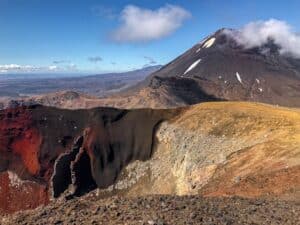
The top of Jabal Al Lawz appears black due to the presence of dark-colored rocks, particularly basalt and volcanic formations.
These dark rocks contain minerals and materials that give them their characteristic coloration. Basalt, in particular, is known for its dark color and is often associated with volcanic activity.
While the exact geological processes that formed these dark rocks would require detailed scientific analysis, it’s possible that volcanic activity or igneous processes were responsible for their creation.
The contrast between the dark summit and the surrounding landscape adds to the mountain’s striking and diverse geological features, making Jabal Al Lawz a unique and visually captivating natural wonder.
Home to Archaeological Discoveries
Jabal Al Lawz is steeped in historical significance, linked to the land of Midian, where Prophet Moses (AS) spent a considerable part of his life.
But the mountain is also a treasure trove of archaeological wonders that beckon tourists and history enthusiasts.
Noteworthy historical sites include an ancient quarry that provides insight into the area’s historical stone extraction, as well as ancient inscriptions on rock walls that depict now-extinct bovines.
Visitors also marvel at rare rock paintings and sculptures resembling elephants, which can be found on the northwest side of the mountain.
The Al Lawz Cemetery and the Golden Calf Event

Located to the north of Jabal Al Lawz, an ancient cemetery stands as a significant historical site. Many scholars and archaeologists associate this cemetery with the ‘Golden Calf’ event, a pivotal moment in history that led to the worship of a golden calf and the death of approximately 3,000 people.
The cemetery spans a vast area and is adorned with a diverse array of gravestones, some reaching a remarkable height of up to 5 feet.
Tourists, particularly those intrigued by ancient legends and historical events, make it a point to visit this cemetery, where the past comes alive through the various shapes and sizes of the gravestones that dot the landscape.
Different Mountains in Saudi Arabia
Saudi Arabia is a country blessed with diverse landscapes, and its numerous mountains stand as awe-inspiring natural wonders, each with its unique characteristics and cultural significance.
Let’s explore some of these remarkable mountains in Saudi Arabia:
- Jabal Maqla
Jabal Maqla, located in the Al-Hijaz region, is a place of profound religious significance. It is traditionally associated with the biblical account of the miracle of the Split Rock.
According to the story, this is where Moses struck a rock with his staff, and water gushed forth to quench the thirst of the Israelites. Visitors are drawn to this site due to its historical and spiritual importance, making it a destination for reflection and contemplation.
- Jabal Al Nour
Known as the “Mountain of Light,” Jabal Al Nour is located near Mecca. It houses the Cave of Hira, where it is believed that the Prophet Muhammad (SAW) received his first divine revelation from Allah through the Angel Jibreel (AS).
For Muslims, this mountain holds immense spiritual significance, and pilgrims and tourists often make the trek to the cave, seeking to connect with this pivotal moment in Islamic history.
- Jabal Sawda
Jabal Sawda is the highest peak in Saudi Arabia, soaring above the Asir Province. Its elevation of over 10,000 feet provides a refreshing escape from the country’s typical arid climate.
Visitors are treated to cooler temperatures and stunning vistas, making it a popular destination for nature lovers and adventurers.
- Thowr Mountain
Thowr Mountain, near Mecca, is an essential historical site in Islamic tradition. It is the location where the Prophet Muhammad (SAW) and his close companion, Abu Bakr, sought refuge in the Cave of Thowr during their journey to Medina.
This mountain holds great importance as part of the Hijra, the migration of the Prophet.
- Jabal Mareer
Located in the southwestern part of Saudi Arabia, Jabal Mareer is known for its rugged and distinctive rock formations.
The mountain’s intriguing terrain attracts hikers, climbers, and adventurers who appreciate the challenges and rewards of its unique landscapes.
- Jabal Nafta
Also situated in the Tabuk region, Jabal Nafta is notable for its fascinating rock formations and ancient petroglyphs, which provide a glimpse into the historical and cultural heritage of the region.
Archaeologists and history enthusiasts are drawn to this mountain to explore the clues to Saudi Arabia’s past.
- Al Qara Hill
Al Qara Hill, located near the town of Hudaibiya, holds historical significance as the site where the Treaty of Hudaibiya was negotiated and signed between the Prophet Muhammad and the Quraysh. It marks a pivotal moment in early Islamic history and is revered by Muslims for its role in forging peace.
- Uhud Mountain
Uhud Mountain is renowned for its connection to the Battle of Uhud, a significant event in early Islamic history.
Visitors can explore the historical battlefield and visit the graves of the martyrs who participated in the battle. It’s a place of both historical importance and reflection.
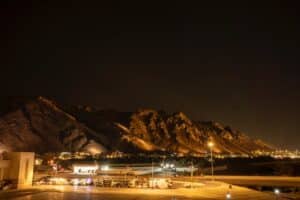
- Daka Mountain
Located in the southwestern region of Saudi Arabia, Daka Mountain is known for its remote and untouched beauty.
Its pristine landscapes attract those seeking a rugged and less-traveled path for hiking and exploration, offering a sense of solitude and natural wonder.
- Ibrahim Mountain
Mount Ibrahim, or Jabal Ibrahim, is a well-known landmark in Taif, notable for its cooler climate.
The beautiful Al-Hada road leads to the summit, where visitors can enjoy panoramic views of the surrounding region. It provides a welcome escape from the heat of the lower elevations.
Summary – Jabal Al Lawz
Jabal Al Lawz, known as the “Mountain of Almonds,” stands as a remarkable natural wonder rife with history, legend, and geological beauty.
The mountain’s rich history continues to intrigue scholars and explorers alike. Furthermore, the presence of ancient archaeological sites and the enigmatic black summit contribute to the mountain’s mystique.
As we wrap up our exploration, let’s not forget the other captivating mountains in Saudi Arabia, each with its unique stories and cultural significance.
Jabal Al Lawz invites you to uncover its secrets, and experience its enchanting beauty, whether for spiritual reflection, historical fascination, or the sheer wonder of nature
Through His Names
New course with
Ustadh Shabbir Hassan






